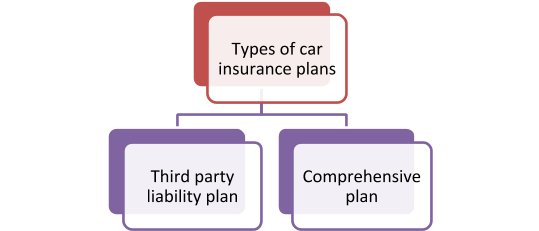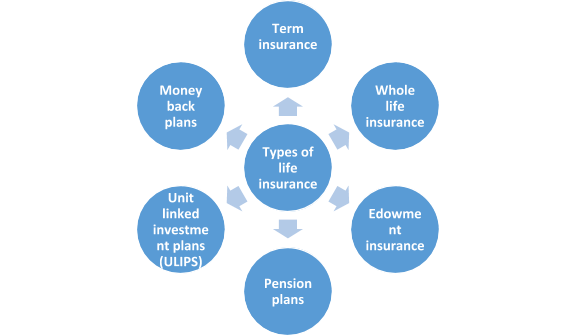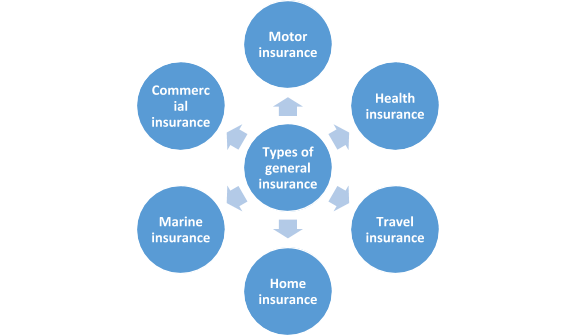In today’s volatile market scenario, a falling rate of interest is the major matter of concern for senior citizen investor who seeks regular income. Senior citizen scheme introduced by the Government of India is the safest investment option offered to senior citizens. It is an ideal investment choice for people aged 60 years and above to avail regular stream of income.
Senior Citizen Savings Scheme – an overview
Senior Citizen Savings Scheme (SCSS) is primarily meant for people aged 60 years and above who are looking for a safe investment option to park their retirement corpus. The scheme offers a good rate of interest, currently, the rate of interest is 8.6%. Interest rate is reviewed by the Ministry of Finance every quarter and is subjected to change periodically. The tax benefits offered by the product makes it the most popular product for senior citizens. This government-backed financial instrument is available through India Post Offices and Public/Private sector banks. Let’s learn about the product in detail.
Eligibility criteria for the Senior Citizen Savings Scheme
Following are the eligibility requirements applicable for senior citizen savings scheme (SCSC):
- Any individual aged 60 years and above can invest in the scheme
- Individuals aged between 55 years to 60 years who are early retirees (opted for voluntary retirement or superannuation) can apply for this scheme, provided the investment into the scheme is done within one month from the receipt of retirement benefits.
- Retired defence personal with the minimum age of 50 years can apply for the scheme
Hindu Undivided Family (HUF) family members, Person of Indian Origin (PIOs) and Non-Resident Indians (NRIs) are not entitled to apply for the scheme.
Key features of the Senior Citizen Savings Scheme
Following are the key features of the Senior Citizen Savings Scheme:
- The scheme comes with a tenure of five years which can be extended by three more years.
- A maximum investment that can be made it senior citizen scheme is up to INR 15 lakhs (in multiples of INR 1,000) for each individual. However, the maximum investment made by you cannot exceed the actual retirement benefits received by you.
- The account can be held in single or joint holding capacity. A spouse can only be the joint holder in the account. Age of the second holder (spouse) is not taken into consideration.
- Maximum limit of investment is attributable to only the first holder as it is the individual specific limit. For example, let’s husband and wife both are senior citizens aged above 60 years. Each of them can individually invest up to INR 15 lakhs (total INR 30 lakhs) either in single holding or in joint holding capacity
- Interest computation will be done quarterly. Interest earned will be compounded and paid on a yearly basis to the savings account linked to the scheme
- Interest rate applicable changes from time to time subjected to the review by the Ministry of Finance. Following are the details of interest rates:
| Period | Rate of Interest |
| FY 2019-20 Q2 ( Jul to Sep) | 8.6% p.a. |
| FY 2019-20 Q1 (Apr to Jun) | 8.7% p.a. |
| FY 2018-19 Q4 (Jan to March) | 8.7% p.a. |
| FY 2018-19 Q3 (Oct to Dec) | 8.7% p.a |
| FY 2018-19 Q2 (Jul to Sep) | 8.3% p.a. |
| FY 2018-19 Q1 (Apr to Jun) | 8.3% p.a. |
| FY 2017-18 Q4 (Jan to March) | 8.3% p.a. |
| FY 2017-18 Q3 (Oct to Dec) | 8.3% p.a. |
| FY 2017-18 Q2 (Jul to Sep) | 8.3% p.a. |
| FY 2017-18 Q1 (Apr to Jun) | 8.4% p.a. |
| FY 2016-17 | 8.5% p.a. |
| FY 2015-16 | 9.3% p.a. |
| FY 2014-15 | 9.2% p.a. |
| FY 2013-14 | 9.2% p.a. |
| FY 2012-13 | 9.3% p.a. |
| Up to 2012 | 9% p.a. |
Benefits of investing in Senior Citizen Savings Scheme (SCSS)
Following are the benefits of investing in the Senior Citizen Savings Scheme (SCSS):
- Safe investment choice: Senior Citizen Savings Scheme (SCSS) is backed by the Government of India. Hence, it is considered to be the safest investment option to park your retirement corpus.
- Better returns: The scheme is introduced with an intention to give a better return to senior citizens during falling interest scenarios. Hence, the returns are generally higher than that of senior citizen fixed deposit and other schemes. Currently, the interest rate is 8.6% p.a.
- Helps to meet medium and long-term requirements: The scheme comes with maturity tenure of 5 years which is good for senior citizen investors seeking medium-term investment options. With an option to extend the tenure for three more years, the scheme helps senior citizen investors to meet their long-term investment needs too.
- Tax benefits: Schemes allows you to claim a tax deduction of up to INR 1.5 lakh under Section 80C of the Income Tax Act, 1961.
- Flexibility: With the extension option, the scheme offers flexible investment tenures.
- Reliability: Senior Citizen Scheme provides a regular income stream throughout the tenure. Government backing with the regular income option at superior return makes it a most reliable investment option.
- Simple process: The investment into the scheme can be easily made with certain simple documents at your nearest Post Offices and at any of the authorised public/private sector banks.
List of Authorised Banks
List of banks providing senior citizen savings scheme are:
- Andhra Bank
- Allahabad Bank
- Bank of Baroda
- Bank of India
- Bank of Maharashtra
- Canara Bank
- Corporation Bank
- Central Bank of India
- State Bank of India
- IDBI Bank
- Indian Overseas Bank
- Indian Bank
- ICICI Bank
- Punjab National Bank
- Syndicate Bank
- UCO Bank
- Union Bank of India
The process to open the Senior Citizen Savings Scheme Account
The process of opening an account under Senior Citizen Scheme is quite simple. Following are the steps to follow:
- Visit any of the India Post office branches or the authorised Public/Private sector bank branches to obtain Form A – Application for opening of an account under the Senior Citizen Savings Scheme. The form can be obtained online also. Application is available online for download on India Post website and also on the websites of registered banks.
- Fill in all the relevant details such as your name, deposit details, nomination details etc.
- Submit duly filled and signed form along with other relevant documents and cheque to the designated bank branches or at India Post office branches
- Your documents will be verified by the officials and the application will be processed
Documents required to open the Senior Citizen Savings Scheme
Following are the documents required:
- Aadhaar card (mandatory)/
- Identity proof – PAN card/Voter’s ID/Passport
- Address proof –Telephone bill/Aadhaar card/Passport
- Age proof – Senior citizen card/Passport/Birth Certificate/PAN card
- Two passport size photographs
- Cash/ Cheque/Demand Draft (Deposit up to INR 1 lakh is accepted in cash. Deposit amount exceeding INR 1 lakh needs to be paid in cheque/Demand Draft)
Tax implications of Senior Citizen Savings Scheme (SCSS)
Following are the tax implications of the scheme:
- Investments made into Senior Citizen Savings Scheme (SCSS) account is eligible for a tax deduction of up to INR 1.5 lakhs under Section 80C of the Income Tax Act, 1961
- Interest earned on SCSS account is a taxable income. TDS (tax deducted at source) is applicable if the interest earned for the financial year more than INR 10,000
Pre-mature withdrawal of Senior Citizen Savings Scheme
Withdrawal before the maturity is allowed under SCSS account after one year of opening the account but with a penalty for time elapsed between the date of account opening and withdrawal. Following are the penalties applicable for pre-mature withdrawal:
- Pre-mature withdrawal initiated before completion of two years from the date of opening the account – penalty will be equivalent to 1.5% of the deposit amount
- Pre-mature withdrawal initiated after completion of two years from the date of opening the account – penalty will be equivalent to 1% of the deposit amount
To conclude, Senior Citizen Savings Scheme is an ideal, safe and the most reliable government-backed investment option for senior citizens aged 60 years and above. The scheme aims to meet the regular income requirement with a superior rate of interest. Senior citizens can park their retirement corpus for the medium-term period and enjoy the benefits of regular stream of income.
Frequently Asked Questions (FAQs)
- Can I extend the scheme tenure? When can I place the extension request?Yes. Senior Citizen Savings Scheme can be extended for three more years after the completion of five years tenure. However, the extension is available only for once which can be requested within a year of maturity of the account.
- Can I have more than one Senior Citizen Savings Scheme Account?Yes. You can hold more than one Senior Citizen Scheme account in individual or joint capacity with your spouse.
- Can I transfer my SCSS account from one post office branch to another?Yes. You can transfer your SCSS account from one Post Office branch to another. You can also transfer your account from Post office to Bank and vice versa.
- Is SCSS investment transferable from one individual to another?No. The investment into the Senior Citizen Savings Scheme is not transferable.
- In case of joint SCSS account, can the second holder continue the deposit in case of first holder’s demise during the scheme tenure?Yes. In case the first holder dies during the scheme tenure, the second holder can continue the deposit provided he/she meets the SCSS eligibility rules.






















